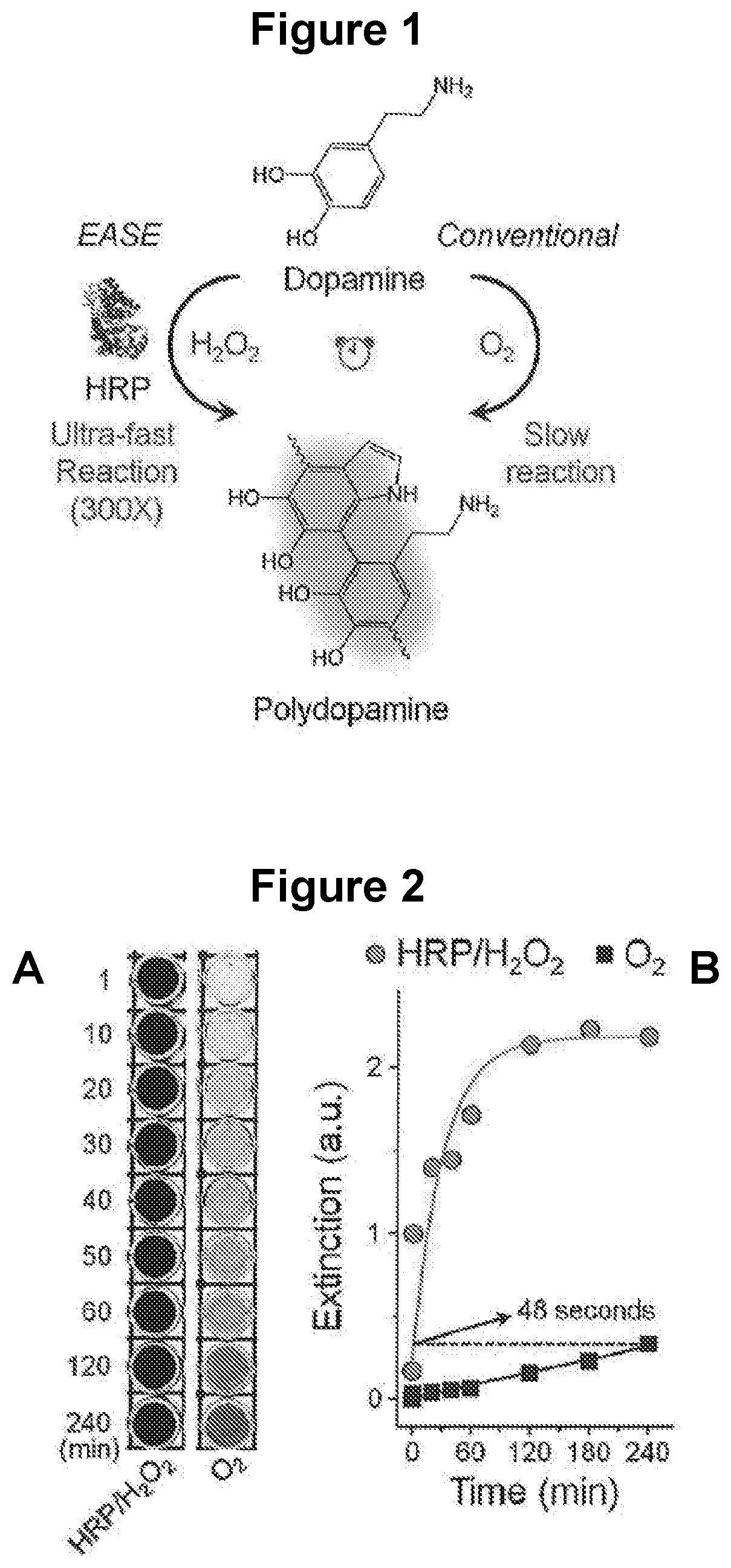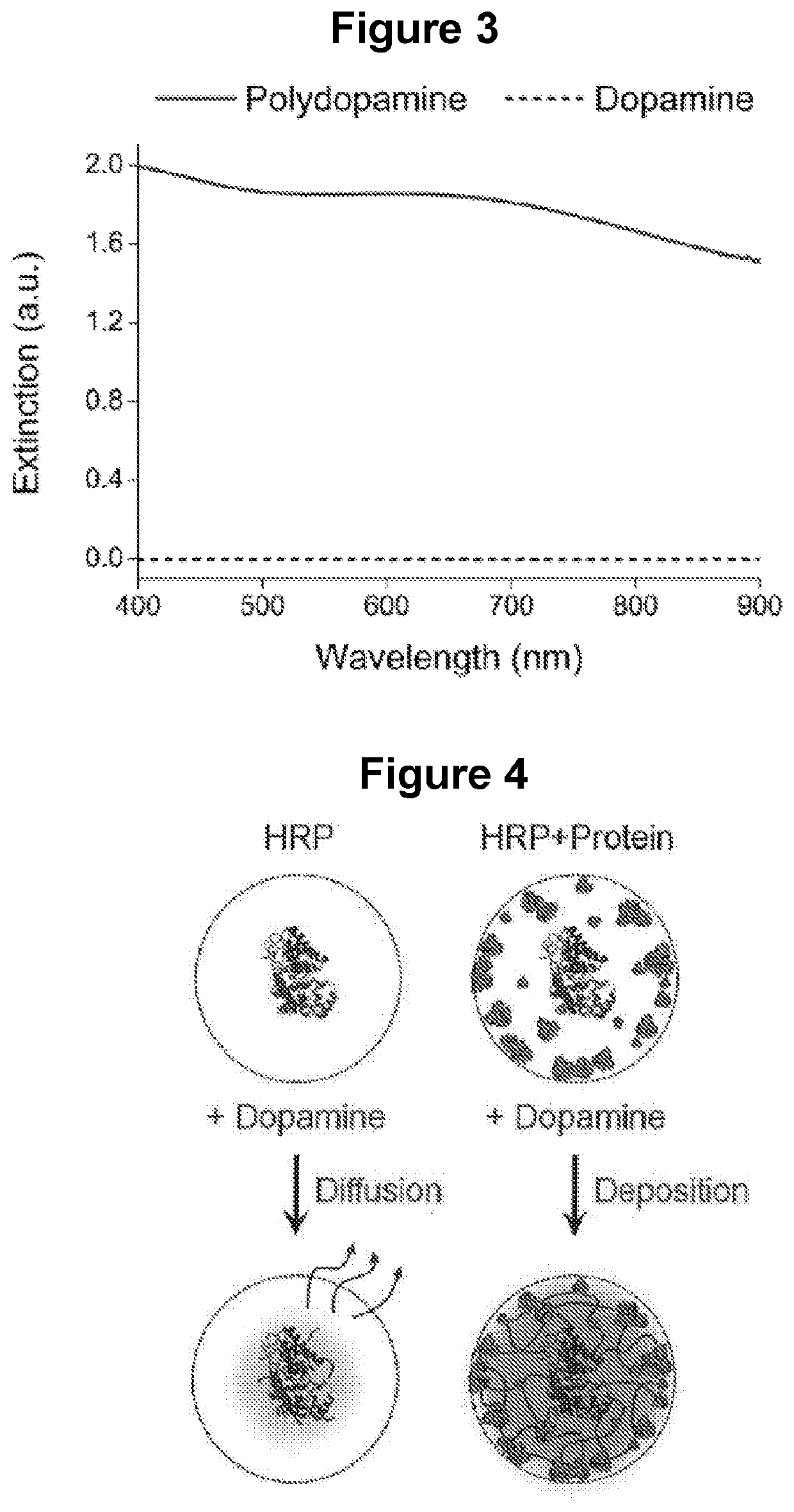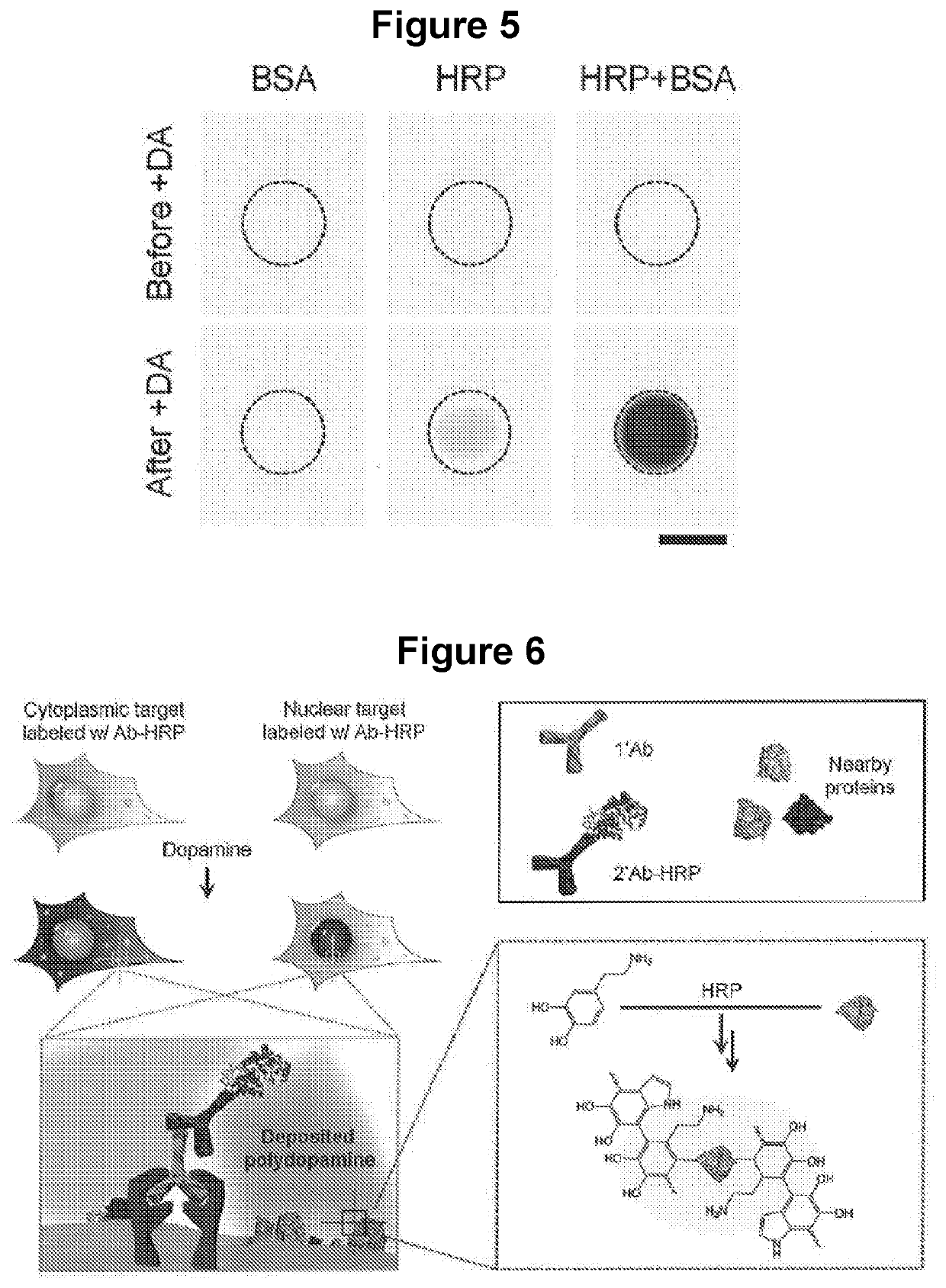Rapid polymerization of polyphenols
- Summary
- Abstract
- Description
- Claims
- Application Information
AI Technical Summary
Benefits of technology
Problems solved by technology
Method used
Image
Examples
example 1
Enzyme-Accelerated Ultrafast PDA Deposition
[0122]To quantify the effect of HRP on FDA polymerization rate, the enzyme-accelerated signal enhancement (EASE) process is compared to the reaction conditions in the conventional dip-coating polymerization procedure where HRP is not present and O2 is the oxidant.
[0123]Preparation of dopamine solution for EASE. Dopamine hydrochloride powder (15 mg) was dissolved rapidly in tris buffer (10 mM, 3 ml) at pH 8.5, followed by quick addition of H2O2 (1M, 60 μl). The mixture solution was used fresh.
[0124]Polydopamine deposition. Small droplets of HRP (0.1 pg) in PBS buffer and / or BSA (15 pg) in PBS buffer were placed on a nitrocellulose membrane and air-dried for 1 hour at room temperature. The membranes were further exposed to the EASE assay for 1 minute and washed with PBS for 30 seconds.
[0125]Results. As shown in FIG. 2A, the dopamine solution slowly changed color from colorless to light grey over a period of four hours, indicating slow FDA for...
example 2
EASE for Immunohistochemistry and Immunofluorescence
[0127]The EASE technology was first applied to IHC and IF, robust technologies capable of interrogating gene expressions in single cells and resolving the heterogeneity issues of complex tissue samples, with well-preserved cell and tissue morphology. IHC and IF work well for high-abundance analyte molecules, but lack the sensitivity to detect antigens of low abundance, in particular in clinical tissue specimens where autofluorescence can be overwhelmingly high. To test the suitability of EASE, two model antigens, Lamin A (nuclear envelope) and HSP-90 (cytoplasm) were stained in formalin-fixed HeLa cells because these two antigens represent analytes in different cell compartments (FIG. 6). Conventional two-step staining procedure was carried out by incubating cells with an intermediate detection reagent (primary antibody (1′Ab)) and a primary detection reagent (secondary antibody-HRP (2′Ab-HRP)), sequentially, except that dopamine w...
example 3
EASE for Suspension Microarrays
[0136]Suspension microarrays are highly multiplexed genotyping and phenotyping platforms used in molecular biology, drug screening, and disease diagnosis. Compared to planar microarrays that are spatially addressable, suspension microarrays are often fabricated by doping microspheres with combinations of luminescent materials and are decoded with flow cytometers (e.g., Luminex microbeads). To determine whether an unknown analyte is present or not, conventional methodologies such as direct or sandwich hybridization and immuno-recognition are applied. The suspension microarrays offer advantages such as faster binding kinetics, but their detection sensitivities are essentially the same as the planar counterparts.
[0137]Preparation of antigen-coated fluorescent beads. IgG purified from mouse and rabbit serum (capture reagent) were covalently linked to the surface of green and yellow fluorescent beads, via 2-step carbodiimide-mediated cross-linking between t...
PUM
 Login to View More
Login to View More Abstract
Description
Claims
Application Information
 Login to View More
Login to View More - R&D
- Intellectual Property
- Life Sciences
- Materials
- Tech Scout
- Unparalleled Data Quality
- Higher Quality Content
- 60% Fewer Hallucinations
Browse by: Latest US Patents, China's latest patents, Technical Efficacy Thesaurus, Application Domain, Technology Topic, Popular Technical Reports.
© 2025 PatSnap. All rights reserved.Legal|Privacy policy|Modern Slavery Act Transparency Statement|Sitemap|About US| Contact US: help@patsnap.com



